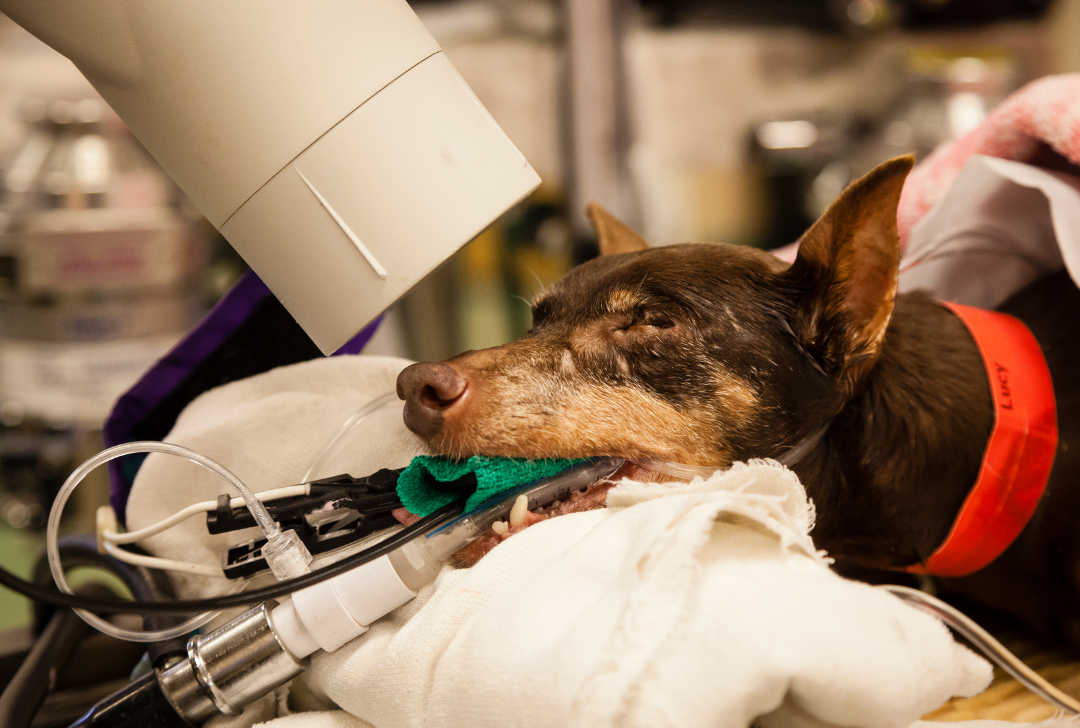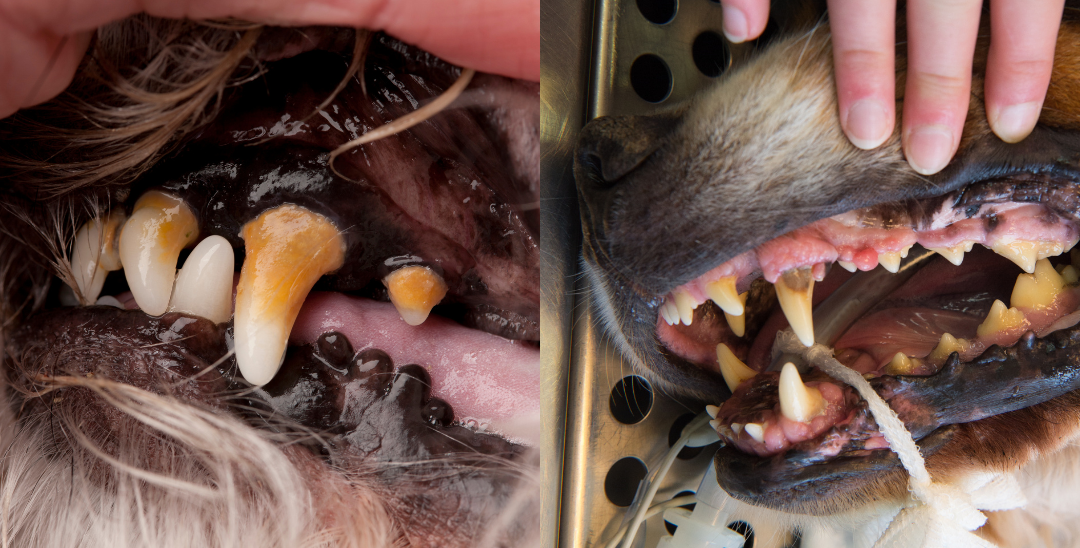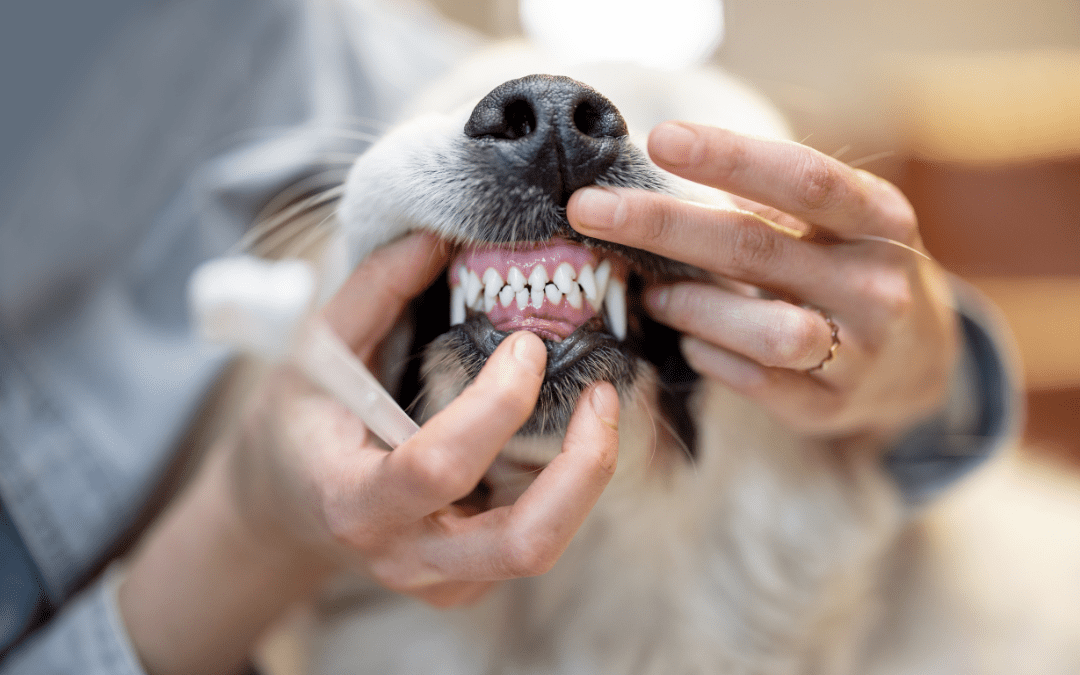When you come in for a physical exam for your pet, one of the things your veterinarian evaluates is your pet’s oral health. If they see anything of concern they will likely recommend scheduling a dental procedure. But is it really necessary?
Veterinary dentistry is not about cosmetics. It is about stopping pain and improving overall health. Surprised? It isn’t for looks or just for better breath either, but is about addressing a variety of painful disease processes that occur quietly in that mouth giving you kisses. These disease processes include periodontal disease, fractured teeth, resorptive lesions, impacted teeth, cancer, stomatitis, and a host of other painful and potentially life threatening diseases. The only way to assess and treat these diseases is through a proper oral exam, dental radiographs (x-rays), and treatment under general anesthesia.

Periodontal disease can affect the overall health of your pet as well. This disease significantly impacts the overall health (morbidity) and life expectancy (mortality) of your pet (4).
Chronic inflammation has been shown to have detrimental effects on the immune system and major organs. Chronic inflammation is also painful and can decrease overall energy and activity levels in your pet. In addition, bacteria and bacterial toxins from the mouth enter the bloodstream and have been shown to affect the heart, liver, and kidneys specifically (2). Unfortunately, having this day-in, day-out bombardment of your pet’s system takes its toll over time.

Have you considered brushing your pet’s teeth at home? Periodontal disease is something that will require periodic professional evaluation and treatment to be effectively managed, but teeth brushing is the most effective method of reducing plaque and tartar buildup between professional cleanings. The Veterinary Oral Health Council https://vohc.org/ also has lists of products such as water additives, treats, and toys that have been evaluated to be effective in reducing plaque and tartar in dogs and cats.
Beyond periodontal disease, fractured teeth are also a very common cause of dental pain, with an estimated ⅓ of canine patients having one or more broken teeth. When a tooth breaks, the structures under the enamel surface are exposed which can be very painful. If you have ever had a toothache or experienced tooth sensitivity, you know it hurts a lot! Fractured teeth can also lead to infection that travels down to the tooth root and can turn into a painful abscess and bone loss. Depending on the type of fracture and what structures of the tooth are involved, treatment can include applying a bonded sealant for minor fractures, a root canal done by a specialist, or extraction. In any case, fractures should be evaluated and addressed under anesthesia with dental radiographs to determine the best course of action.

It is important to note that there may be NO obvious or overt signs that your pet is suffering and in need of a dental procedure. But if you see any of the following you should consider having your pet evaluated:
- Bad breath
- Difficulty or reluctance in chewing
Food falling out of the mouth - Shyness about having the face touched
- Changes in behavior including being more touchy, lethargic, withdrawn, or a decrease in activity
- Swelling of the face
- Blood from the mouth
- Drooling
- Pawing at the face
- Redness or swelling in the mouth
- Missing teeth or broken teeth

What about anesthesia?
One of the biggest concerns owners have with veterinary dentistry is the anesthesia required for the procedure. There is even a movement currently of offering anesthesia-free dentistry. The American Veterinary Dental College (5) strongly advises against this. Anesthesia free dentistry only allows the visible tartar above the gumline to be removed, but periodontal disease occurs beneath the gumline. If you only scale the visible tartar, you will have clean-looking teeth with disease raging below the surface. In addition, other pathology will be missed because the mouth cannot be thoroughly evaluated and dental radiographs cannot be done. The risks to your pets health and well-being from oral diseases typically outweigh the risks of anesthesia. In cases where your pet has other serious health concerns that makes anesthesia more of a risk, referral to a specialist may be warranted. Ultimately, addressing your pet’s pain is a top priority, and if it can be done safely, it is recommended.
So if your veterinarian recommends a dental procedure, know it is with your pet’s well being fully in mind. They want your pet to live a long, happy, healthy, and pain-free life, and your pet’s oral health is a big part of making that a reality.
1. American Veterinary Dental College avdc.org/primary-care-practice/
2.. National Institute of Health (NIH) https://pmc.ncbi.nlm.nih.gov/articles/PMC9774197/
3. Merck Veterinary Manual online https://www.merckvetmanual.com/digestive-system/dentistry-in-small-animals/periodontal-disease-in-small-animals#Etiology-and-Pathogenesis_v3261228
4. NIH https://pubmed.ncbi.nlm.nih.gov/31226571/
5. American Veterinary Dental college, why not anesthesia free https://afd.avdc.org/category/for-pet-owners/

